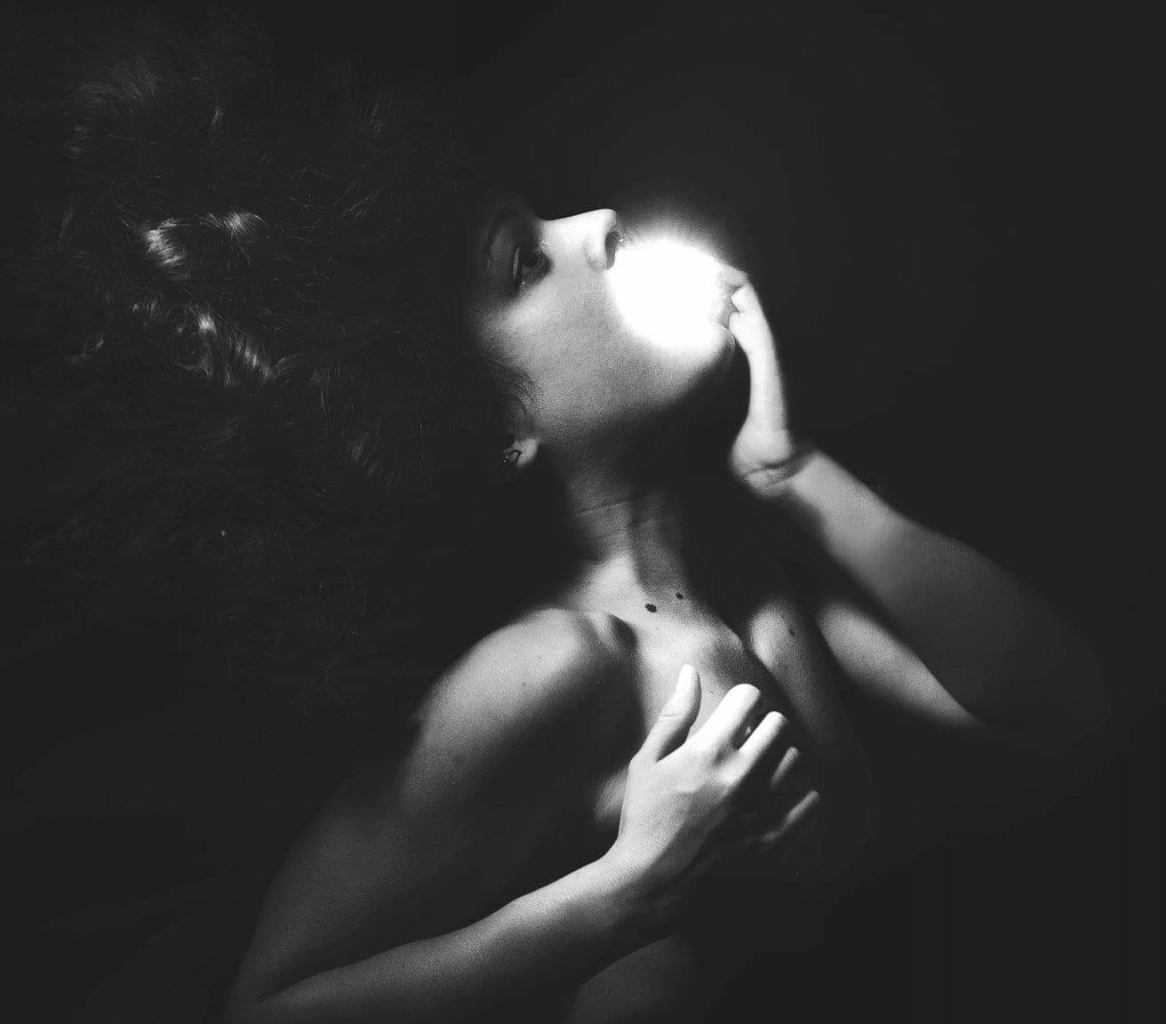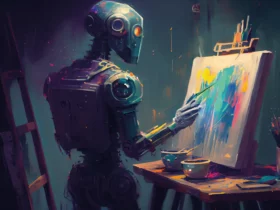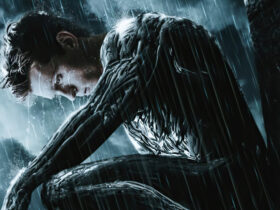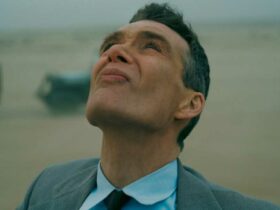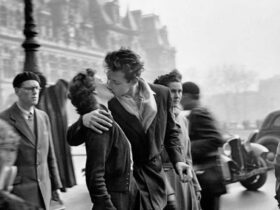A story is all we look for in a book, a film, a photograph. With Photo Story I decided to give you a story. Indeed, many small buds of stories that however already emanate a pleasant fragrance. The first Photo Story was written in honor of Luisa, with eyes that burn with determination like the color of her hair
There are people who shed light all around them. Shining stars, high brilliance suspended in the night, paraphrasing John Keats. When I met Luisa for the first time, I immediately perceived the energy it emanated. I thought that if she really managed to channel it into her photographic works she could have given so much to this now boring world.
The only thing I want, before starting to tell the story of Luisa and her images, is to try to give shape to the contemptuous and somewhat naive determination perhaps, condensed into a pocket-sized red-haired girl. Because underneath I saw in her eyes still the germ of childish lightheartedness that makes her face the efforts of life with a different approach, the one that Pastures he searched perhaps in his poems. It is really important that I tell you this thing that I have seen with my own eyes because no photographer and no human being in general has achieved great goals without having the determination and the will to dare; without the fear of being inappropriate, just like children do. I saw this in his eyes, in his way of behaving and speaking. Peter Pan would probably have loved her more than Wendy.
Photo Story, Luisa: who sowed photography in us?
I am sure that most of our passions are born by chance. Or rather, they arise from a series of fortuitous events, all correlated that add a piece to a puzzle that is too large and complex to be interpreted with our limited ability. And so we say that the passion was born by chance. But the case does not exist. Every action we perform, every person we meet, every object we use changes us and gives us an imperceptible new shape.
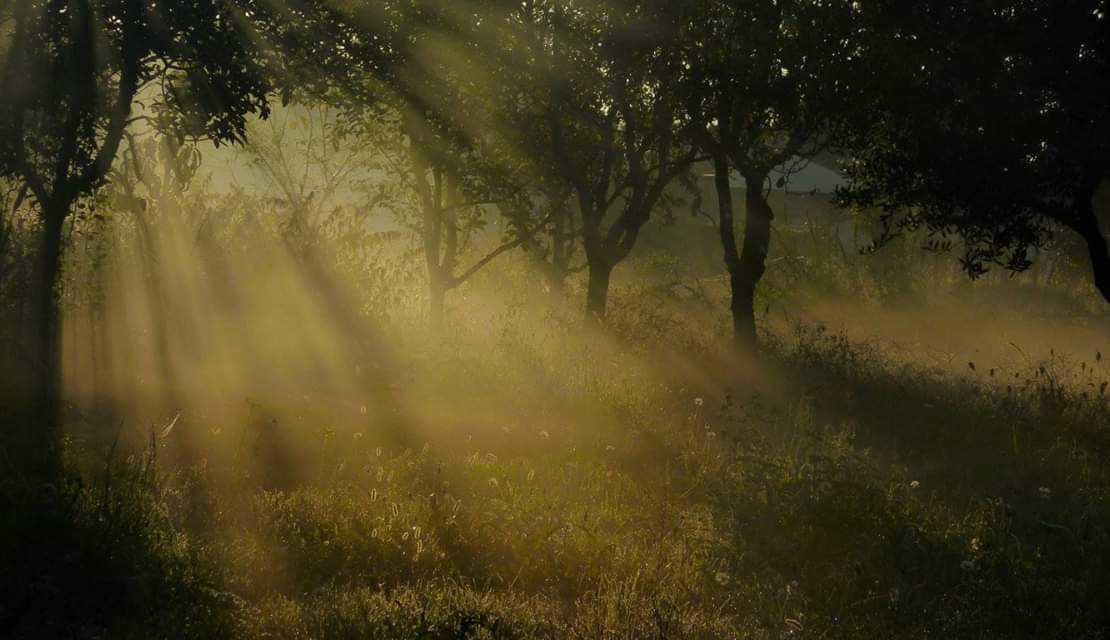
“I remember those mornings when, before going to school, I took my father’s compact car. I carefully hid it in my jacket pocket and went out on my bicycle at dawn. »Luisa Mazzanti
One wonders what attracts certain people to seek different points of view for capture a moment of beauty in the world that surrounds us. One of the aspects that I love most about photography is that it is reality, a glimpse of the world that some visionary has decided they want to trap and show to the world; what drives this person I just can’t say. Luisa says she loves the feeling of fullness she feels when the beauty of an image manages to unleash an emotion. But I’m sure this only comes later.
Luisa, when as a child you received your grandfather’s old compact as a gift, what did you think the first time you pressed the shutter button? What emotion has pervaded your heart? I wish that old camera could talk, I wish it could describe that moment to me. A simple click that changes a life, a small piece added to that puzzle that you are now, Luisa. Who knows what was imprinted on it.
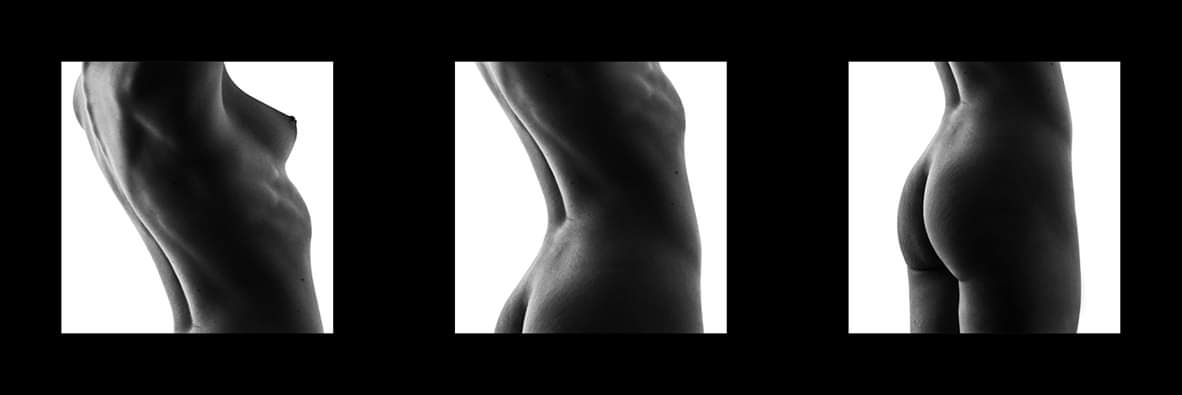
Triptych of nudes, Luisa Mazzanti
The identity of the photographer can be seen in the photos he takes, if he puts himself into it. You don’t need a signature on a photo of McCurry to acknowledge that it was taken by him.
Perhaps to enter into Luisa’s vision we have to delve beyond photography, after all, life is a dense network of intertwining lines. From what she told me, she has always had a passion for drawing, since she was a child. Yes, it is true that all children have a passion for drawing when they are young, but I believe that few can aspire to impress their teacher to the point of convincing her to show their album in front of everyone. There were many drawings in Luisa’s album, certainly very beautiful, and I am sure that her companions looked at them avidly, some with admiration, others with envy.
Then, suddenly they start to laugh, to laugh yes. An explosion of hilarity in the fourth grade class of a school in Lucca. The end of the album was full of nudes. Men and women, as beautiful as mother nature, had designed them and then enclosed them in the shell of original sin’s modesty. Are you also laughing at the thought of an innocent little girl drawing nudes? On the other hand, my eyes sparkle when I think about what we have forged those drawings in little Luisa’s mind. A little girl who draws nudes at 8 will never be afraid to draw or photograph anything, anything. He will never feel ashamed in representing any kind of emotion. It will not stop at any idea to be transposed into an image.
Photo Story, Luisa: let the images speak
A photographer chooses to express himself with images. To really understand human maturity and intensity of this girl we have to look at her photographs. Do not look at them lazily as we scroll through the home page of our social networks. We have to really observe them, we have to ask ourselves what we are looking at because what we are looking at is a person who is trying to yell at us. It is our duty to stop and listen to it.
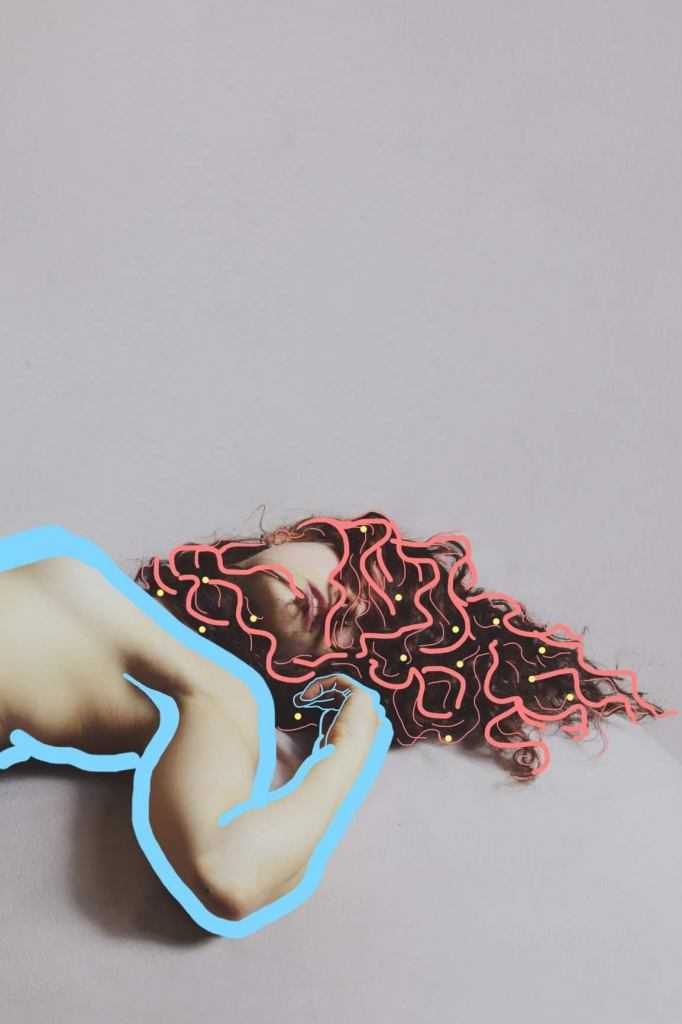
Self-portrait, Luisa Mazzanti
I would like to start something simple, in an ascending climax. This shot struck me because I am normally a bit critical about the use of digital brush strokes in photographs, I find them many times used to patch up an unsuccessful shot, which does not say much in itself. If not. The pose and expression are very reminiscent one of the many Venuses, a detail of a Renaissance painting. More than the shapes, it is probably the pastel colors that give great expressiveness to the shot.
The contrast of the blue-gray and red-orange shades does create a contrast, but it is so slightly hinted that the whole image is immersed in a great balance. There is delicacy, there is beauty, there is candor in this simple shot, the brushstrokes give a pinch of panache to an image that already exuded elegance, they contribute to an unreal, dreamy atmosphere that gently cradles the observer between many curved lines. An image to testify that often simplicity is the winning weapon in photography; just remove everything that is not necessary: furniture, shadows, clothes, colors to get an interesting shot.
Photo Story, Luisa: the mask
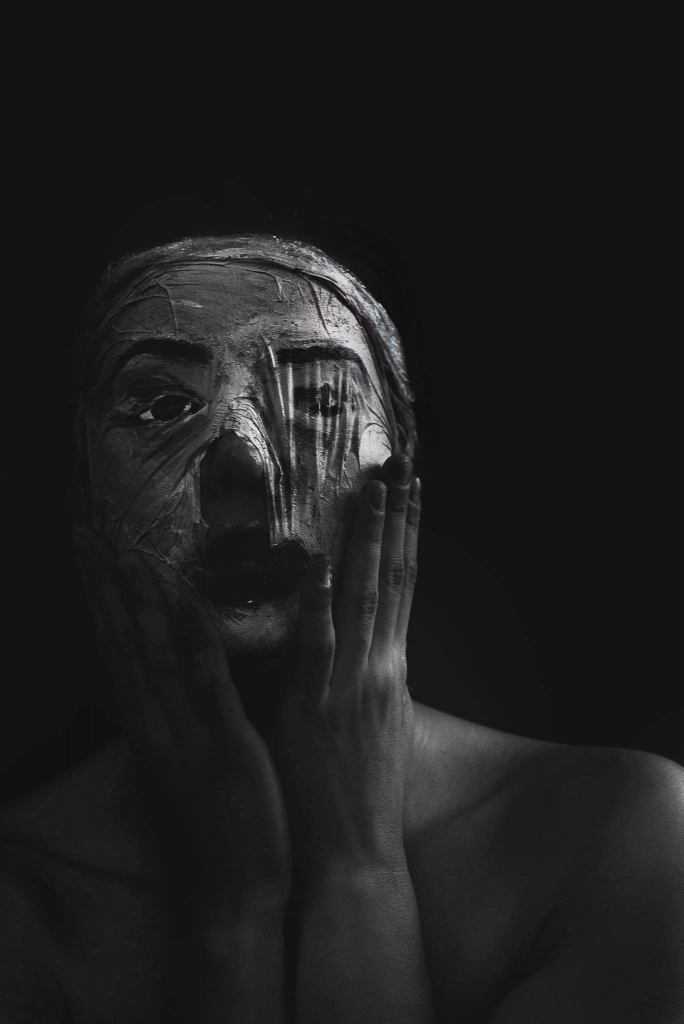
The mask, Luisa Mazzanti
This self-portrait offers a reflection of beauty. Each of us paints a mask behind which he hides, showing a face that is not his own. A more beautiful face perhaps, but a fictitious face. We do it a little to protect ourselves from ourselves, from our personal prejudices. A little to self-convince ourselves that we are someone else, because we don’t like each other. When, on the other hand, the true beauty is ourselves, in our naturalness.
We leave the dreamy and distant world of pastel colors and plunge into our gloomy everyday life. In this shot I see a great skill of the photographer in transposing an idea into a shot. It is not a trivial shot, it’s thin. The principle on which it is based is similar to Dante’s retaliation, defined by contrast in this case. The beauty mask made up of tricks – I must say that the Italian language could not find a better noun in this case – and the mystifications that we prepare to hide ourselves every day is revealed for what it is: an aberrant mass of lies said to ourselves. However, a true face emerges from beneath the mask that almost seems to tear under the weight of this dichotomy. A real person. It may not be what we want to see with our eyes, but it can be touched, its scent and warmth can be perceived. Do we really just want to be watched?
In the shot black and white enhances the wrinkles and texture of the mask, giving drama to the image. Also in this case the composition is simple: the line of the shoulders and the eyes are positioned with the rule of thirds, but the slightly off-center subject breaks the static balance, giving that touch of dynamism that is necessary in a shot like this. Even the hands that rise from the bottom of the image and wrap the face are used as a compositional element which, in addition to breaking the horizontal lines, guides the gaze towards the main subject, the mask.
Photo Story, Luisa: the scream
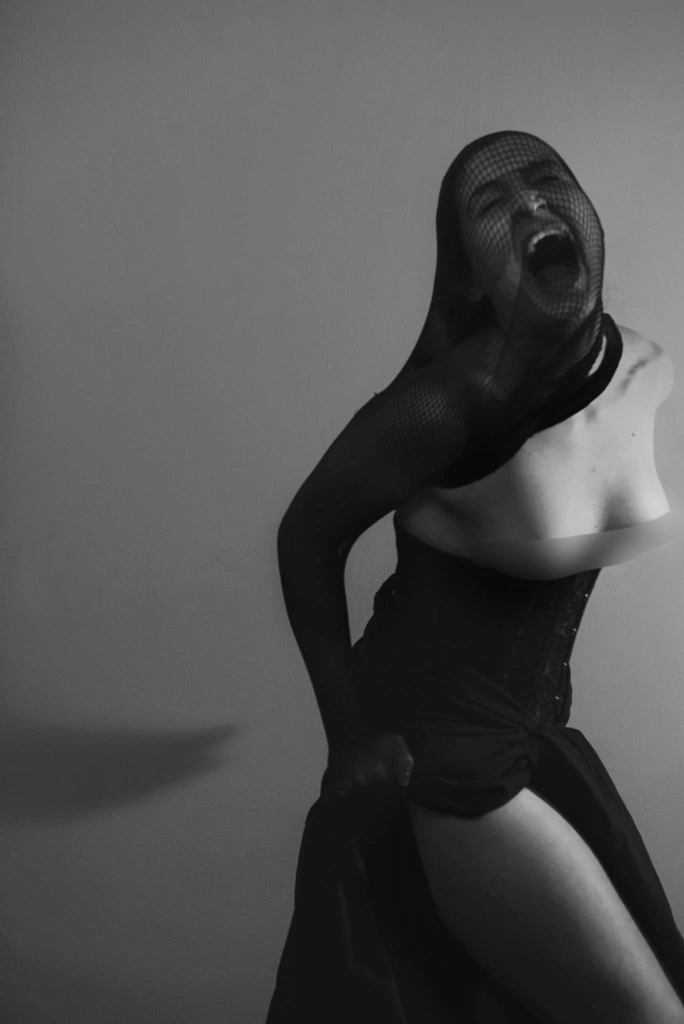
The scream, Luisa Mazzanti
It is a reflection on women and their sexuality. Nowadays there are many social rules under which we get used to living, suppressing what would be our freedom to act and to be… or to desire. I wanted to represent the impossibility of a woman to express her femininity and her eroticism in a free way. She would like to release this energy that bubbles within herself, but she cannot because it is prevented from her. Scream his pain, scream that desire that is suppressed in an unheard silence.
The rules are a limit that man has imposed on himself to be able to live in peace with other individuals in a society. Many times these rules are dictated by morality or fashion and do not really protect individuals, they only serve to classify them. But the truth is that we we were born in a riot of emotions and drives, then hidden and limited to avoid being marginalized. The expression of the subject it is quite emblematic: no anger or sadness shines through. It is as if one wanted to represent the desire in purity, the drive that wants to go out not because it is tired or stressed, but because it is in its nature to push, tighten, tear. To live together the partial suppression of desire is a necessary ritual, but we cannot cancel the drives that live in us, they will continue to scratch inside us, like tigers ready to leap. Who knows, maybe those who have the courage to embrace the tigra will be happier than those who try to avoid them by closing it behind a wall of rules.
The composition in this case is not trivial, nor taken for granted. Normally bringing a subject so close to one side of the frame is not a good idea: it creates a sense of great imbalance and above all a strong feeling of oppression. But in this case, that’s exactly what you want to give. Luisa wants you to feel oppressed, imprisoned like your impulses. As all the great masters say: the rules are made to be studied, understood and broken – when necessary. The harassing effect is also accentuated by the direction in which the subject appears to be moving. Furthermore, the body slightly leaning towards the camera gives the image a note of chilling aggression. A slight shiver runs down your spine as you look at this shot.
Photo Story, Luisa: solitude
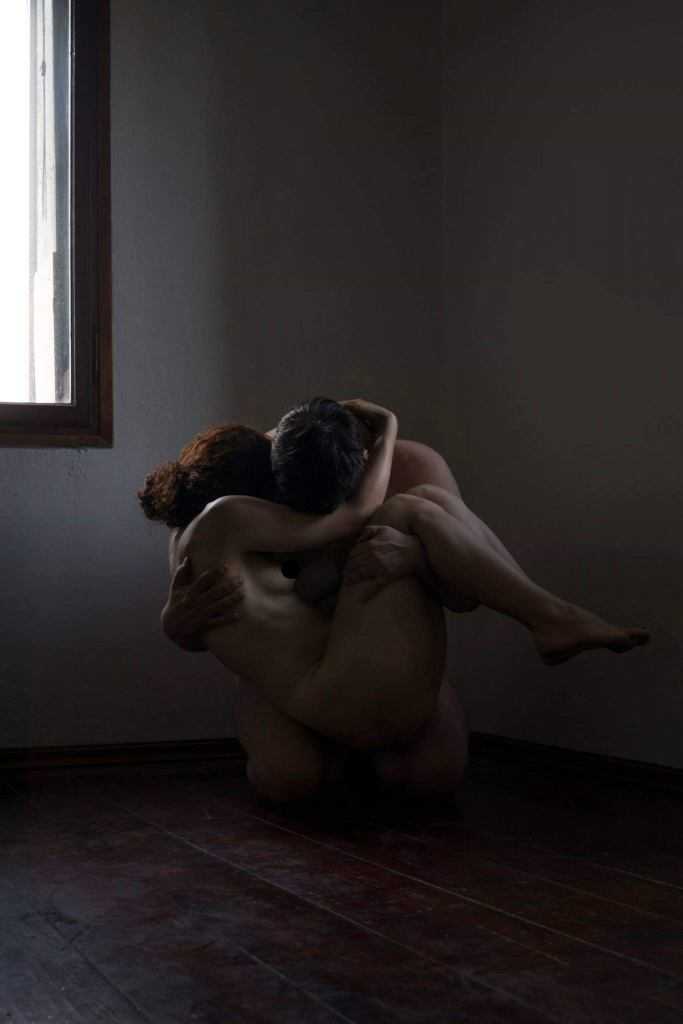
Loneliness, Luisa Mazzanti
Two souls, alone, who embrace each other in their pain. Maybe the two complement each other, but they don’t know it, they don’t know each other. They are in two different places than each other. But this pain unites them and brings them closer. Letting them meet in that room …






